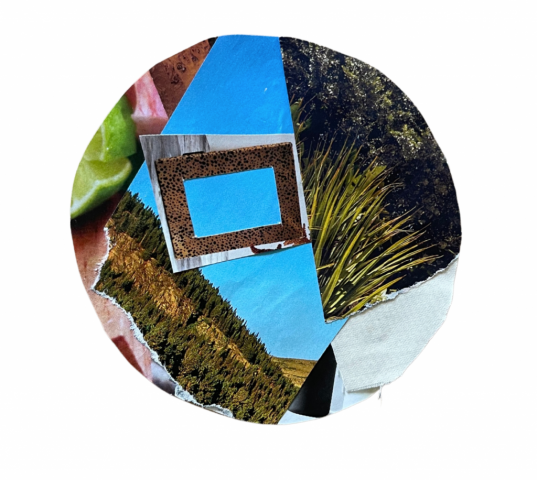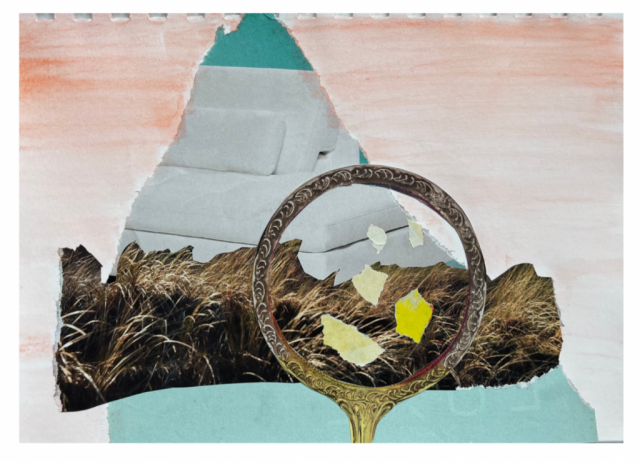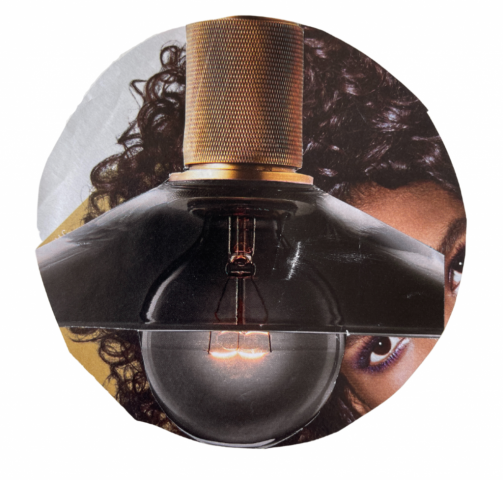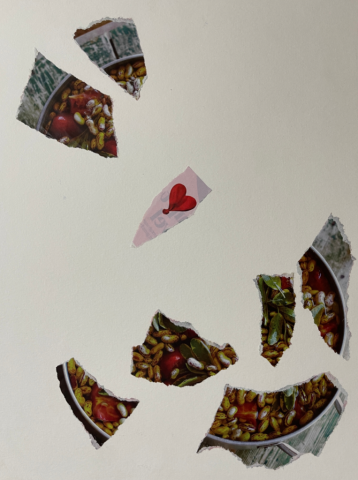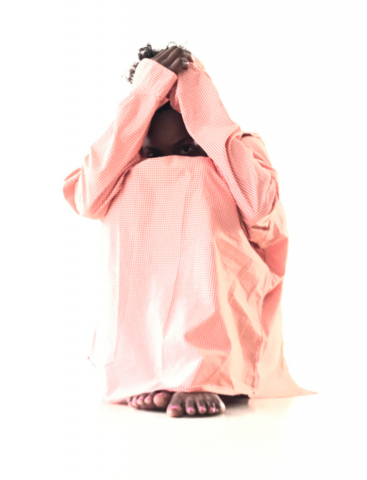Deanna Barton
Artwork Title: Untitled
Year: 2020
Medium: Torn magazine images collage on paper
Artist Statement
I’ve come to respect my feelings. Each work of art gives my feelings room to breathe and helps to soften an emotional callus. Art is my lifelong teacher and healing consultant.
Click on artwork to read more about it.
ABOUT THE ARTIST
Deanna Barton (she/her/hers) is a Board Certified Art Therapist, educator, and artist currently residing in Atlanta, GA. She works in private practice and runs an art and wellness business, Alluma: Art and Healing, where she holds space for people of color to process deep pain and creatively begin to heal through art expression and mark-making. She received a Master’s in Art Therapy from The George Washington University and completed her undergraduate studies at Spelman College. Deanna teaches at Edinboro University’s graduate art therapy program, is a member of the Accreditation Council for Art Therapy Education (ACATE), and is a member of the American Art Therapy Association’s Multicultural Committee. She works to increase diversity and equity within the field by educating and supporting students of color interested in pursuing careers in expressive therapies. Deanna facilitates art experiences for young women of color healing from anxiety, depression, perfectionism, and experiences childhood, racial, and workplace trauma. Her art practice is conceptual and interdisciplinary in nature and incorporates collage, mixed media, nature, photography, and dance/movement.
- What drew you to the field of art therapy?
- What drives your current work?
- Where do you see the field going?
- What impact is needed to effect changes regarding DEI within the field of art therapy?
I came to know myself best through artistic forms. Art made space for me when my mental health was waning. Art-making is my self-love language. My ancestors, who were educators, artists, and entrepreneurs, left a map of dots. A professor connected the dots for me one day in undergrad at Spelman College when he mentioned art therapy. The path led me to the field. When I arrived, I noticed that few looked like me on the practitioners’ side of the table. I wanted to continue the efforts to ensure our field mirrors the diverse populations we serve.
The de-stigmatization and de-colonization of mental health and the power of creativity drives my work. In clinical practice, I create and hold space for Black women to connect to their humanness through artistic and creative expression as they explore their lineage, heal deep wounds, discover self-love, and create new narratives with the debris of systemic racism. In my art practice, I give internal dialogues space to shape and form and invite further exploration. Often these inner conversations and works of art explore themes of identity, racial stress and trauma, and seeking joy and play through the elements of art and nature.
If we push the bounds of how we define it, the field of art therapy can flourish. We must not overlook the intersections of art and healing that occur on our periphery, and we must acknowledge those practices that existed before we called what we do art therapy.
DEI should not be transactional. We must align the DEI efforts of our professional organizations, educational institutions, licensing, and governing bodies. The recruitment of students from diverse backgrounds requires understanding the internal barriers, within the person, and the external barriers of institutional, cultural, and individual racism. Future art therapists of color and diverse backgrounds need to see themselves in our history. The profession’s history must fully integrate the stories, perspectives, and accomplishments of our past and present art therapists from all backgrounds and communities. And finally, we should consider all the entry points to our field, both traditional and non-traditional, and ensure students can access these paths.



